Working principle
First of all, let’s figure out how an induction cooker works. It’s not hard to guess the operating principle of a gas or regular electric cooker. In a gas stove, the heating element is a burner with a flame, in the second – a heating element, which heats up to the desired temperature.
The device of an induction cooker is completely different: heating occurs due to induction current and it heats not the burner itself, but directly the cookware that is on it.
Let’s consider the principle of operation of an induction cooker step by step:
- electric current is supplied to the device through the outlet and cable;
- the charge enters the voltage frequency converter;
- the converted charge passes to the magnetic coil, which creates a magnetic field;
- eddy currents are transmitted to the bottom of the cookware, creating the movement of electrons and, accordingly, heating the food.
Electromagnetic radiation, on the basis of which modern induction panels are created, was discovered back in the 19th century (1831) by physicists Joseph Henry and Michael Faraday. The technology has been used for domestic purposes since the 1870s, so it cannot be called completely new. The boom of recent years is rather the result of mass production of induction cookers, and not the novelty of the idea.
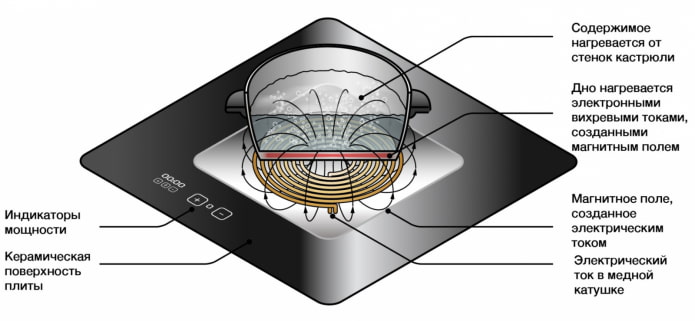
Types and characteristics
Induction cookers should not be confused with other electric ones. Cookers, in addition to induction burners, can have open cast iron heating elements or halogen heating elements hidden under glass ceramics. There are also combination models, which have both conventional and induction burners under the glass-ceramic surface.
All induction cookers are electric, but not all electric ones are induction.
Characteristics of induction cookers:
- Power consumption. Everything is known in comparison, so it is easier to calculate electricity costs, comparing them with other types of cookers. Fortunately, the results of experiments can be found in the public domain. To heat 2 liters of water, a cast-iron cooker takes almost 10 minutes and 320 W, a halogen cooker takes 9 minutes and 270 W, and an induction cooker takes just under 5 minutes and 225 W. At the same time, the efficiency of induction is more than 90%, which is almost 2 times higher than any other models.
- Power. Although the declared energy consumption is usually higher than that of halogen types, in fact, induction cookers consume it more economically, because do not heat the coating itself and the air.
- Temperature. One of the advantages of induction is the most precise control. On many models, you can set not just a number from 0 to 9, but a specific number – for example, 200 degrees. Some stoves have preset automatic modes – frying, stewing, boiling, etc. Another plus is that some models have constant, not wave heating, allowing you to maintain the desired temperature for a long time.
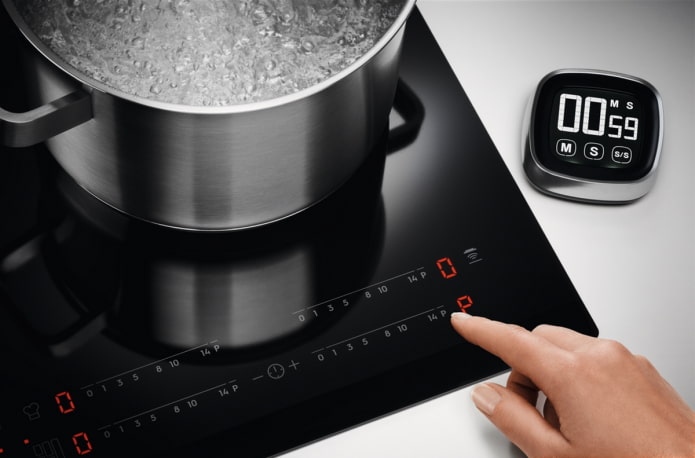
Types of stoves by installation method
- Tabletop. Compact models are usually produced with 1-2 places for dishes. Their main advantage is their design and small size: tabletop stoves are easy to take with you on vacation or to the country, they do not take up space on the countertop and can be stored in a cabinet between uses.
- Freestanding. Manufacturers make them complete with an oven. They do not need a separate case, as they have a stable base.
- Built-in. The most popular option today is hobs that are cut into the countertop. They look minimalist, stylish, and can be installed anywhere on the work surface.

By number of burners
- 1. Portable household appliances usually have a stand for only one pot or frying pan.
- 2. An induction cooktop with 2 burners can be built-in or portable.
- 3. The external dimensions of a triple induction cooker are no different from a 4-burner one, but the stands have a larger diameter and allow you to place larger kitchen utensils nearby.
- 4. Standard option, to which everyone is used to: it often has additions in the form of a burner with maximum power or several circuits.
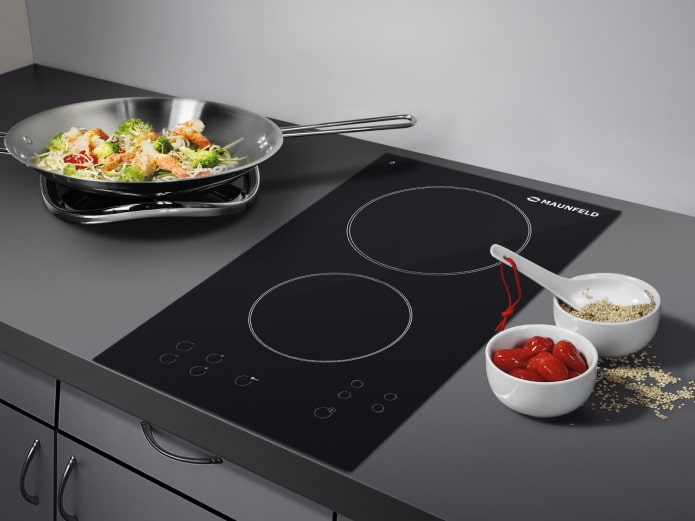
There are also induction cookers “without burners”. Their working surface is located under the entire area, the device independently determines the installed cookware and understands where exactly it needs to be heated.
Pros and cons
To better understand the features of induction cookers, we will list the pros and cons.
Advantages of induction cookers:
- Economy. As we have already found out, due to high efficiency, induction cookers consume less electricity – which means you will have to pay less for electricity.
- Speed. Induction cooks dishes quickly, at least due to the instantaneous temperature gain – you do not need to wait for the heating element to heat up. Only a few seconds pass from the moment of switching on until the maximum thermal energy is released.
- Ease of use. Cooking on such a stove is a pleasure. In addition to the specified functions such as boiling and frying, it is worth noting the “intelligence” of the stove – it heats up only when there is suitable cookware on it. It is impossible to turn on induction by mistake. Another “gadget” – a timer – is available in almost all modern models. Set the desired time and the stove will turn off on its own.
- Safety. When there is a small child in the house, leaving him alone in the kitchen is a high risk. Children love to turn levers and press touch buttons. But in the case of an induction hob, there is no need to worry – do not store dishes on it and it will definitely not turn on, which means the baby will not be able to burn himself.
- Easy to clean. The surface of induction hobs is smooth glass. It is enough to wipe it with a cloth after cooking. And if you forgot – no problem, even if the hob is quite dirty, it can be quickly cleaned using special products.
- Intuitive control. You do not need to have special knowledge to cook: usually on the hobs there is an on-off button and an adjustment for each burner, which you can figure out in a few seconds.
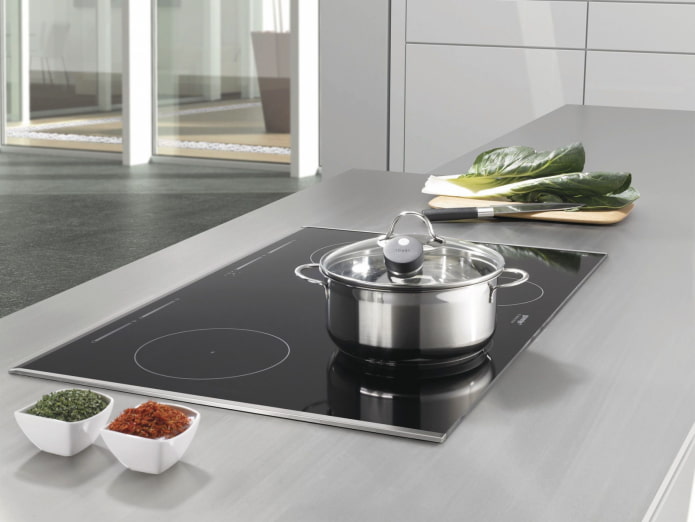
Unfortunately, not everything is so cloudless. Induction also has its disadvantages:
- High cost. The price of devices operating on a ferromagnetic field differs by approximately 20-30%.
- Additional costs for cookware. In order for the stove to work, you need to put a suitable pot or frying pan on it: not all cookware is capable of being “magnetized” to the burner. Probably, after buying a stove, you will have to say goodbye to your favorite utensils. Which is not only a shame, but also expensive – after all, cookware for induction is more expensive than usual. But this problem can be solved if you buy a special adapter.
- Noise when turned on. Due to the operating principle, induction cookers are quite noisy – but not louder than working hoods.
- Harm from exposure to currents. An induction cooker will not harm an ordinary person who never parts with a mobile phone. But people with pacemakers are better off not using them.
So, with the score 6:4 in favor of induction, let’s move on!
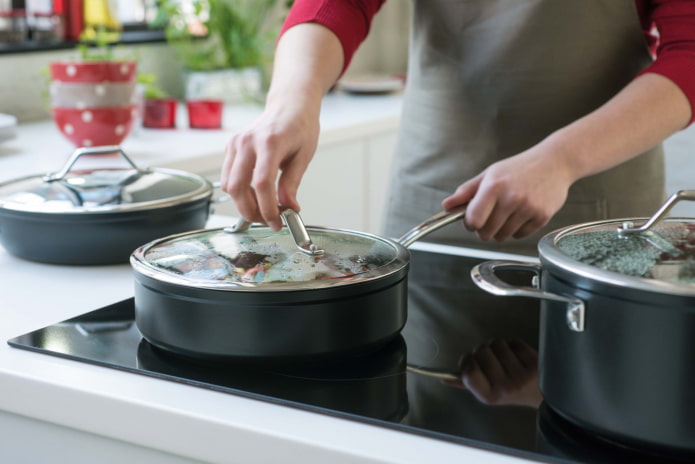
How to use?
There are no special rules for induction appliances: they are easy to operate, but the instructions for your specific model will help you understand them in more detail.
However, there is also general information that everyone should know. For example, differences in requirements for cookware:
- Not all metal cookware is suitable for cooking. For example, the stove will not work with budget aluminum saucepans and cauldrons.
- Suitable utensils include cast iron, steel, enameled, copper.
- You can make sure that the cookware is definitely suitable by carefully examining the packaging: look for a spiral icon or the inscription Induction.
- An equally important parameter is a flat bottom! For a number of reasons, it should not have any protrusions or recesses – the flattest possible is best.
- The bottom of small containers should not be less than 12-14 cm. Turks and ladles are too small and simply do not heat the stove.
- The distance between the edges of the burners and the bottom of the cookware should be approximately the same. In this case, it is better to take cookware smaller than a mug than larger, and place it in the center.
Tip! A convenient way to check the cookware is a magnet from the refrigerator. If it sticks to the bottom, then the pan is suitable.
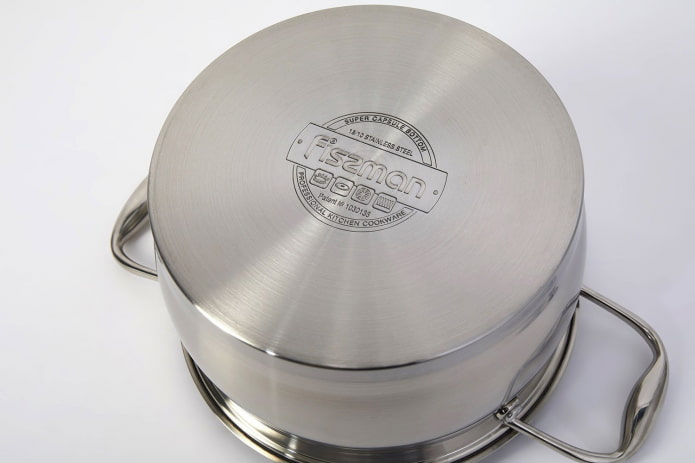
Useful tips:
- In various sources, you can find information that the stove burners do not heat up – on the one hand, this is true, heating occurs directly on the cookware. On the other hand, the heat from the bottom is transferred to the surface, so you should not touch the stove after turning it off.
- Most induction cookers are equipped with a protection system: they automatically turn off after 180 minutes of continuous operation, and the power is also blocked if various liquids get into them. Consider this before purchasing.
- Additional functions, such as Booster (energy transfer to an adjacent burner) or maintaining heat make everyday life much easier.
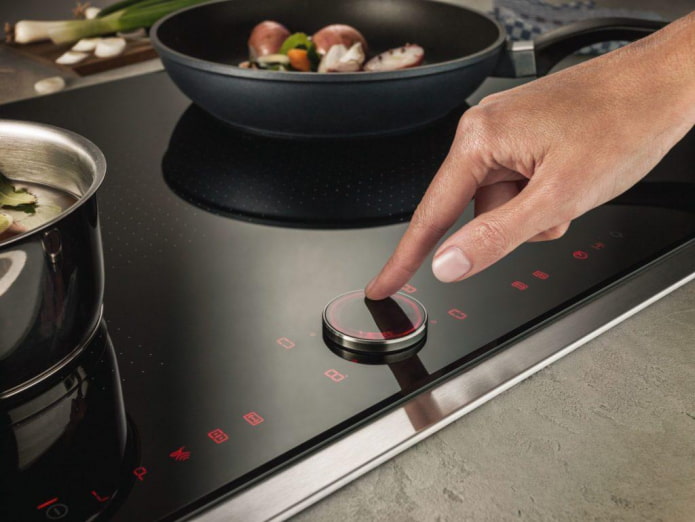
Care features
To maintain the original appearance of your induction hob for many years, get into the habit of washing it after each use. A sponge with dishwashing liquid and a dry towel are enough for regular wiping. Use paper towels to remove stains.
Important! You can wash the panel only after it has completely cooled down!
If the hob is dirty, buy a special product for glass ceramics: they usually contain acids or alkalis, so before using it is better to protect your hands with gloves and your lungs with a respirator.
Important! Do not use abrasive products or metal brushes to avoid scratching the surface.
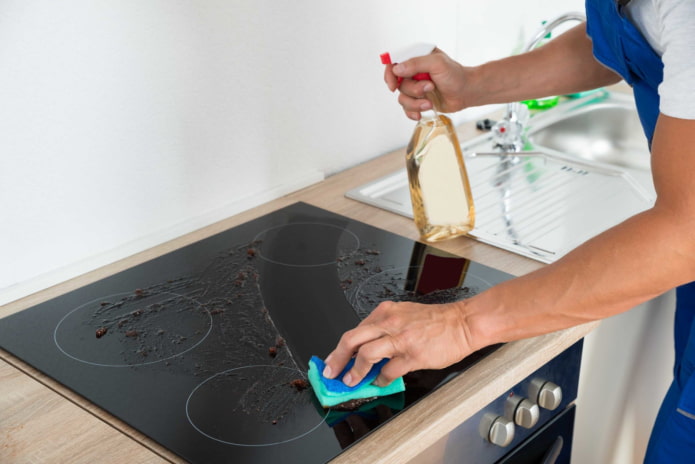
And finally, remember: induction is not all the same! Be sure to read reviews and buy equipment only from trusted manufacturers.
Now reading:
- What kind of rug is suitable for the hallway? – types, functions and 27 photos of design
- Ideas for a children’s room of 12 m²: design photos for girls and boys
- Types of ceiling plinths for stretch ceilings.
- Burgundy wallpaper in the interior: 55 examples for the living room, kitchen, bedroom and children’s room
- Bright kitchen: design ideas and 50 photos for interior inspiration.